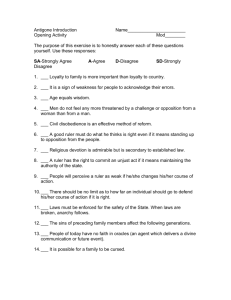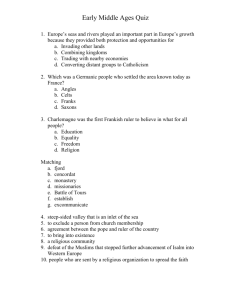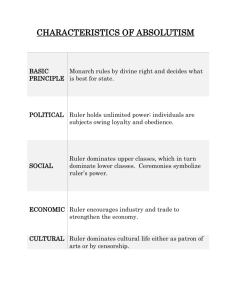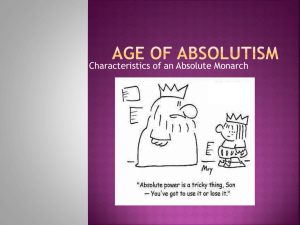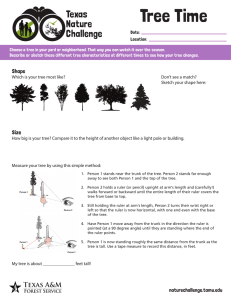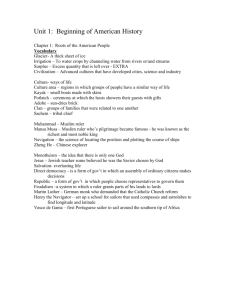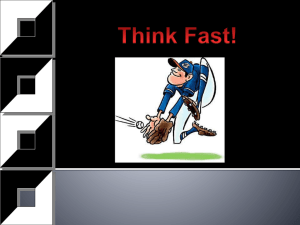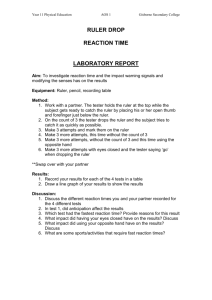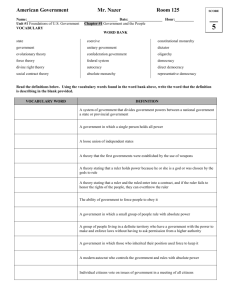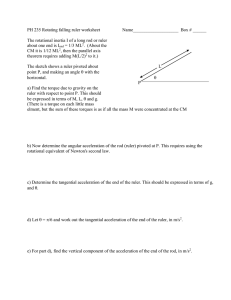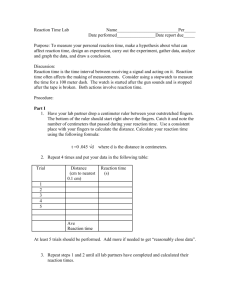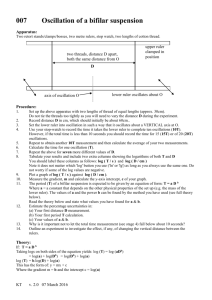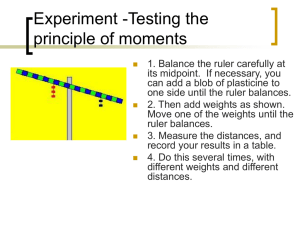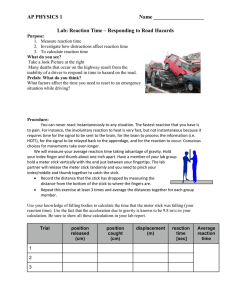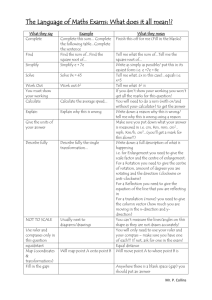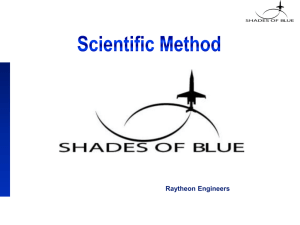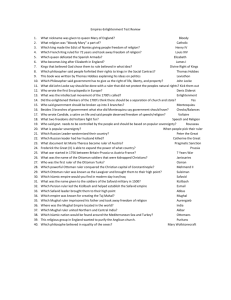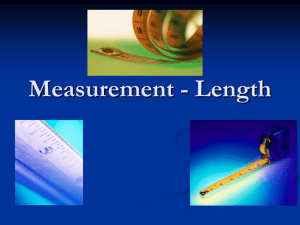SeabrookRose
advertisement
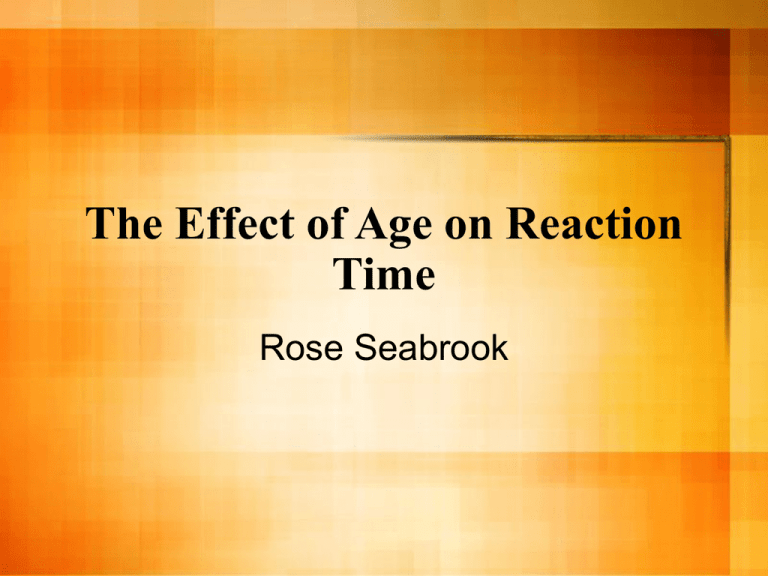
The Effect of Age on Reaction Time Rose Seabrook Problem: How does the age of a person affect their reaction time? Hypothesis: If a person is in the age range 10-25 years old, then they will have the fastest reaction time. Basic Concepts Reaction Time – Visual Cortex – Visually processes information and patterns Motor Cortex – Interval of time between application of a stimulus and detection of response Plans, controls, executes voluntary functions Reticular Formation – – Filters incoming stimuli Governs the functions of major organisms Purpose of Experiment To discover why people in the age group 10-25 are better in sports, but, are more likely to get into car accidents. Design Diagram Title: The effect of the age of a person on their reaction time Hypothesis: If a person is in the range 10- 25 years old then, they will have the fastest reaction time. IV: age Level 10-25 26-35 36-45 46-55 56-70 Trials 20 20 20 20 20 Design Diagram Cont. DV: Distance Ruler Falls (cm) Constants: height ruler is dropped from, height at which the person catches the ruler, and the weight of the ruler. Results 1 2 3 4 5 6 7 8 9 10 11 12 13 14 15 16 17 18 19 20 1025 14 13 10 17 20 8 1 11 18 7 7 14 18 19 20 22 23 17 16 23 2635 17 15 16 14 14 13 18 12 9 16 14 27 15 20 20 19 22 15 20 16 3645 17 22 21 18 19 20 18 22 12 13 13 20 21 14 18 26 11 10 12 19 4655 22 26 27 25 28 11 17 19 22 5 24 7 16 22 30 13 15 12 25 17 5670 28 21 26 30 27 29 30 23 26 26 19 15 23 10 28 29 26 16 24 27 Results Cont. Averages 10-25: 14.9 26-35: 16.6 36-45: 17.3 46-55: 19.3 56-70: 24.15 Statistical Analysis ANOVA Sum of Square Difference Degrees of Freedom Mean Squared Fisher FValue Significance (p)=.05 Between Groups 1, 006.46 4 251. 615 8.292 <0.001 Within Groups 2, 882. 83 95 30. 346 N/a N/a Total 3, 889.29 99 N/a N/a N/a •data is of significance because the p value is <.05 • 1/1000 chance that data occurred by chance Graphed Data QuickTime™ and a decompressor are needed to see this picture. Conclusions Hypothesis Supported – Reticular Formation – – 10-25 have a faster reaction time Tasks become routine, brain receives less stimulation, lower levels of activity Slows down memory and reaction time as you age Visual and Motor Cortex – Slow down with age Sources of Error Area Watched – Attention Span – Readiness Human Error – Ruler or hand Measurement Alcohol Influence – Inhibits reaction time Improvements Designate an area to watch Warn subject when ruler will be dropped No alcohol in subjects system Extensions and Applications Alcohol content on reaction time Gender on reaction time Driving Sports THE END
